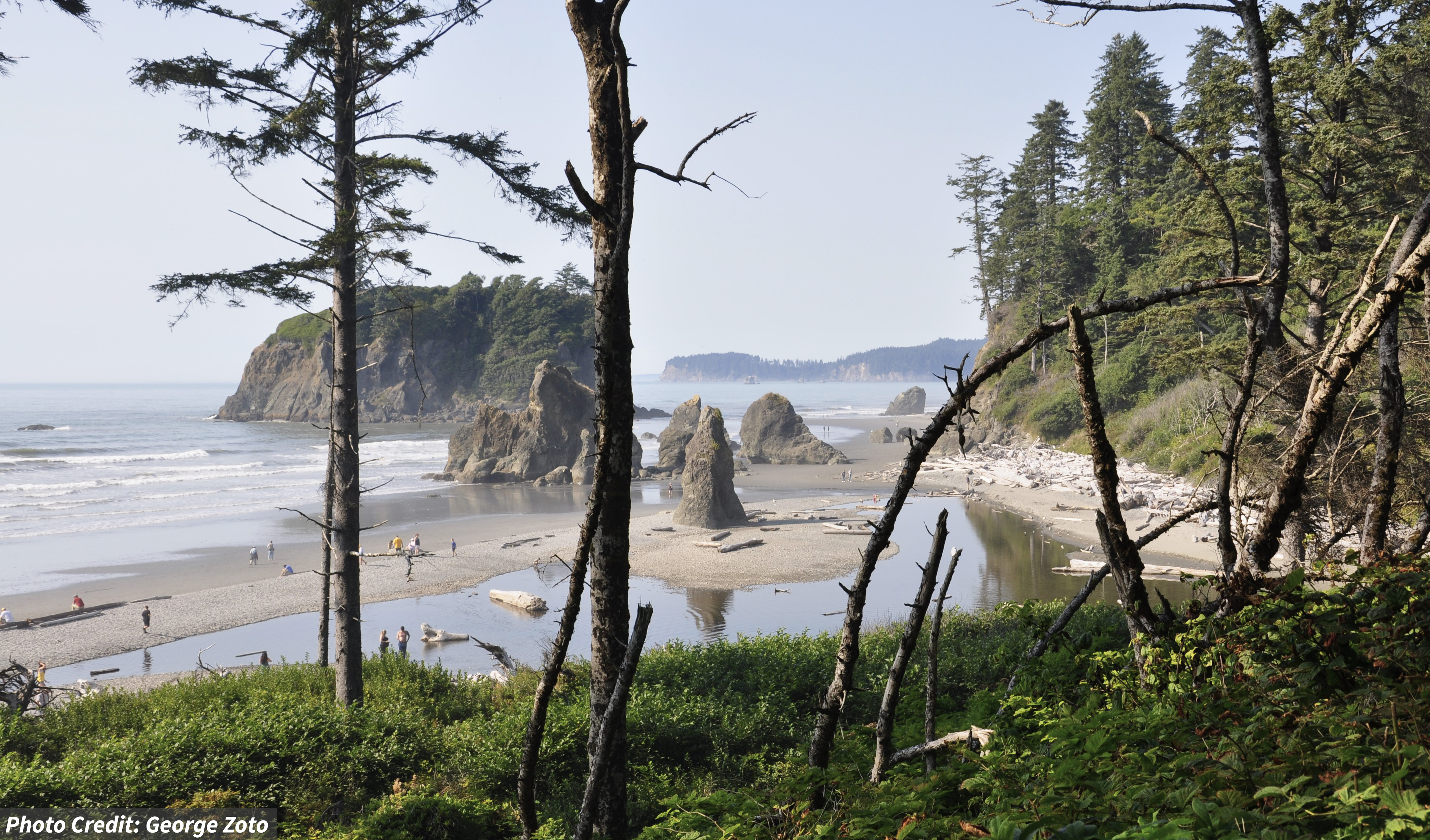States / Washington
Washington
Coastal Management
The focus is on managing coastal areas to increase resilience, with an emphasis on balancing environmental, economic, and human wellbeing. Mandated by the Coastal Zone Management Act, the two federal programs designed for this task are the National Coastal Zone Management Program and the National Estuarine Research Reserve System. Programs are administered, on the federal side, by NOAA’s Office for Coastal Management, in partnership with the coastal states.

State Programs
Coastal Zone Management
Washington Coastal Zone Management Program. Established in 1976, Washington was the first federally approved coastal zone management program. The mission is to protect, restore, and ensure the responsible development of the state's marine shorelines in Puget Sound and along the Pacific Ocean coast. The program covers 15 coastal counties and extends three nautical miles into the Pacific Ocean, excluding federal and tribal lands.
National Estuarine Research Reserves
Padilla Bay National Estuarine Research Reserve. Designated in 1980 and protecting 11,966 acres, the reserve conserves one of the largest beds of eelgrass in the contiguous United States—nearly 8,000 acres. Located in the northern reaches of greater Puget Sound, at the saltwater edge of the delta of the Skagit River in the Salish Sea, the reserve is eight miles long and three miles across. Habitats here support herring, smelt, salmon, flatfish, Dungeness crab, ducks, eagles, shorebirds, and peregrine falcons. Tourists, artists, and wildlife enthusiasts flock here for the pristine beauty, as well as for harbor seal and sea otter spotting. (See handout)
Impact Stories
Stories that showcase the recent work of this state's coastal management efforts.
- Hoko Watershed Restoration
- Advancing Oyster Restoration with Shellfish Growers in New England, Mid-Atlantic and West Coast
- Assessing Nature-Based Solutions to Improve Flood Hazard Management for the Tulalip Tribes
- Hydraulic Reconnection to Restore Salmonid Habitat at Thomas’ Eddy, Washington
- Building Capacity for Edmonds Marsh and Estuary Restoration
- Designing Habitat Restoration and Tribal Resilience Efforts within the Nisqually River Delta
- Restoring Swan Creek to Address Channel Erosion and Improve Salmon Habitat
- The Washington State Coastal Climate Resilience Initiative: Accelerating Implementation of 20 Years of Partnership Efforts
- Community Leadership Paves the Way to Promising Erosion Treatment
- Regional Collaboration for Better Resilience Outcomes in the Puget Sound Basin
- Integrated Resilience Strategy for the Padilla Bay Coastal Community
- Padilla Bay Coastal Prairie Restoration
- Owl Creek Habitat Restoration Project, Phase Two
- Issaquah Creek Instream Restoration at Lake Sammamish State Park, Washington
- Makah Ocean Data and Management Capacity, Data Sovereignty, and Student Engagement
- Improving our Coasts with High-Resolution Land Cover Data
- Restoring Padilla Bay’s Vital Tidal Marsh
- Quileute Indian Tribe Real-Time Hypoxia Monitoring Moorings
- Enhancing the Makah Tribe’s Engagement in Regional Ocean Planning and Management
- Quinault Indian Nation Participation and Engagement with the West Coast Ocean Alliance, a Regional Ocean Partnership
- Graveyard Spit Restoration and Resilience Project
- NOAA Strengthens Resilience Before, During, and After Disasters
- Largest-Ever West Coast Oyster Data Map
- Blue Carbon Enterprises Lessen Climate Change Damage
- NOAA’s “Green” Expertise Meets New Infrastructure Era
Additional Resources
*Fast Fact Sources:
People: American Community Survey Five-Year Estimates
Beaches and Estuaries: Shoreline Mileage of the United States
Employment and Economy:
Marine Economy for the Coastal U.S. States
Marine Economy for the U.S. Territories